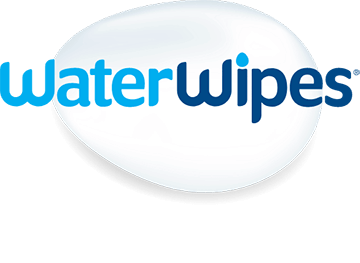We know it can be worrying to find a rash on your baby’s skin but nappy rash is a fairly common issue and we’re here to help. In this guide, we share expert advice from the likes of dermatologist Dr. Cairine Wilkinson and Dr. Pixie McKenna, as well as newborn baby nappy rash tips to help you understand, prevent and treat nappy rash effectively so you can keep your baby happy and healthy.
1. What is newborn baby nappy rash?
2. Symptoms of nappy rash - What does newborn baby nappy rash look like?
3. What are the causes of newborn baby nappy rash?
4. How to prevent newborn baby nappy rash
5. Nappy rash tips - How to treat newborn baby nappy rash
6. How long does newborn baby nappy rash last?
7. When to see GP for newborn baby nappy rash
1. What is newborn baby nappy rash?
Let's begin by addressing what exactly newborn baby nappy rash is. Nappy rash affects many babies and is commonly caused by irritation of the skin.
Nappy rash can be characterised by red patches on your baby's bottom, or the whole area may be red. Their skin may look sore and feel hot to touch, and there may be spots, pimples, or blisters.1
2. What does newborn baby nappy rash look like? Symptoms of nappy rash:
Mild nappy rash – Pink or red spots. These spots may merge into blotches, affecting a small part of the nappy area. Your baby may cry when passing pee and poop.
Severe nappy rash – You may notice bright red spots and cracked skin affecting a large part of the nappy area. Your baby may be irritable and restless and could have a high temperature.
Fungal nappy rash – Inflamed skin and red spots around the edges of the rash. The folds of the skin may also be affected.
Hopefully, you now have a better understanding of what nappy rash looks like. We know that the symptoms of nappy rash can look very nasty but soon you'll be armed with our tips and be able to better protect your baby's bottom in no time!
3. What are the causes of newborn baby nappy rash?
There are several causes of nappy rash and sometimes it's hard to prevent them. Here are some of the most common reasons2 why your baby may be suffering from the effects of nappy rash:
Skin being in contact with pee or poop for long periods – If your little one is going to the toilet more often or not being changed regularly enough this can lead to irritation on their skin. Check out our nappy changing tips article for more info.
Bacterial or fungal infection – Sometimes, the cause of nappy rash can be from a bacterial infection and this can then spread around your baby's bottom and genitals. The area covered by a nappy can be a breeding ground for bacteria, as it is warm and moist, and so an infection can quickly develop and spread.
Antibiotics – If your baby has been prescribed antibiotics then these can affect bacteria levels that prevent nappy rash from occurring, resulting in the very thing the body is designed to naturally ward off. If you're still breastfeeding and taking antibiotics this can also have a similar effect.
Chafing – If your baby's nappy or clothes are too tight they can rub against the skin, causing irritation and nappy rash. A tight nappy also reduces airflow which can lead to the nappy area becoming too moist.
New products – If you've decided to try a new baby shampoo or a washing detergent than this may have irritated your baby's skin, which could lead to nappy rash.
Sensitive skin – Some babies just have more sensitive skin than others and so regular cleaning, changing, and using products can irritate it.
Fragranced wipes – Wipes are great for easy cleaning but those that are perfumed or alcohol-based could all potentially irritate sensitive skin.
Diet – Foods that contain high amounts of citric acid could lead to nappy rash, this includes foods like oranges, strawberries, and tomatoes.
Hopefully the above helps you to understand more about the wide-ranging causes of nappy rash.
4. How to prevent newborn baby nappy rash
Unfortunately, as there are several causes of nappy rash it can sometimes be hard to prevent it. You can try prevent nappy rash by ensuring your baby is kept clean and dry when possible. We’ve listed a range of nappy rash tips below on how to help prevent nappy rash so you and your baby stay happy.
Avoid too much soap, bubble bath, and lotion. Wash your baby's bottom with water and avoid any products with ingredients that could potentially irritate your baby's delicate skin.
If using wipes, use gentle baby wipes. Check the back of the pack to ensure they do not contain alcohol or other unnecessary ingredients. WaterWipes are the world’s purest biodegradable, vegan, baby wet wipes and provide gentle but effective cleansing for your baby or toddler’s skin.
Dry skin thoroughly. When changing your baby, dry the skin thoroughly, patting instead of rubbing if the area is sore.
At each nappy change apply a thin layer of barrier cream or a barrier spray to dry skin. Ask your health visitor or pharmacist to recommend one.
Leave your baby’s nappy off for as long as you can to let fresh air get to their skin. If this isn’t feasible, ensure dirty nappies are changed as soon as possible.
Bathe baby three times a week. It is fine to bathe your baby every day (especially if they have baby eczema) but three times a week is usually enough to keep the skin clean. A pure wipe such as WaterWipes can be used to gently and effectively cleanse in between bath times.
Using only gentle products on your baby’s bottom can help prevent nappy rash and help care for the skin, so before you buy anything, read the ingredients list and make sure you know what each one does.
Where wipes are concerned, that’s easy. WaterWipes are made from 99.9% water and a drop of fruit extract. That’s why they’re the world’s purest baby wipes.
“The best way to deal with nappy rash is to try to prevent your baby from getting it in the first place. But, if your baby gets nappy rash, you can usually treat their skin yourself,” dermatologist Dr. Cairine Wilkinson claims.
Follow these tips on how to help prevent nappy rash and read our nappy changing tips article to be sure you'll have a happy baby come nappy changing time. However, we understand that sometimes these things can't be prevented so if you're dealing with a dreaded case of nappy rash, here are our top tips for handling it.
5. Nappy rash tips - how to treat and care for newborn baby nappy rash
You can treat nappy rash at home with over the counter medicines and a little extra TLC3. Here are our nappy rash tips on how to treat and care for nappy rash and get your baby back to their usual happy self.
Let your baby's skin breathe
Try to air out your baby's skin regularly with no nappy time for short periods. It's also a good idea to use nappies that are a little larger than your baby needs while treating nappy rash. This allows your baby's skin plenty of air to heal and dry out a little to stop the rash from getting worse.
Check and change their nappy regularly
Ensure they don't sit in wet or soiled nappies for longer than necessary – try to change them as soon as they have peed or pooped. This does mean you will need to keep a very close eye on them and check their nappies regularly throughout the day.
Carefully clean the affected area
Use a soft cotton wool ball and warm water to clean your baby's bottom after each change, then dry with a clean towel. Pat the area rather than rubbing to ensure you don't irritate the skin further.
Bathe your baby every day
While you may use wipes in between baths, we recommend bathing your little one every day while treating nappy rash. Use a fragrance-free soap to avoid any potential irritation and soak their skin in warm water before gently drying after.
Apply an over the counter cream or ointment
Speak to your pharmacist or doctor about the best ointments to treat nappy rash. A cream or ointment that contains zinc oxide is a good choice as this creates a protective layer on skin and relieves irritation. Check the ingredients list and become familiar with the ingredients you are putting on their skin.
6. How long does newborn baby nappy rash last?
“Nappy rash should clear up after about three days4.’ Dr. Pixie McKenna assured us. “However, if you are at all concerned about the rash, if you think your baby has something that is not nappy rash and has lingered longer than three days or if it is causing your baby discomfort, get advice from a doctor.”
7. When to see a GP for newborn baby nappy rash
If you've done all you can to clear up that case of nappy rash but it doesn't seem to be going away or has got worse, it may be time to visit the GP. Here's when to consider booking that appointment2:
If your baby's skin bleeds, itches, or is oozing.
If your baby has a fever.
If your baby appears to be experiencing discomfort when peeing or pooping.
If the nappy rash gets worse after home treatments
You know your baby better than anyone, so if you feel that something isn't right, get them to a professional as soon as you can for guidance. Your GP may prescribe you a mild steroid (hydrocortisone) cream if home remedies aren't working or topical or oral antibiotics for more severe infections.
We know that dealing with newborn baby nappy rash is never a fun job, so consider our causes, symptoms and tips to prevent or treat that dreaded irritation with ease. If you found our nappy rash treatment tips useful, be sure to take a look at our other baby skin articles on our Parenting Hub:

